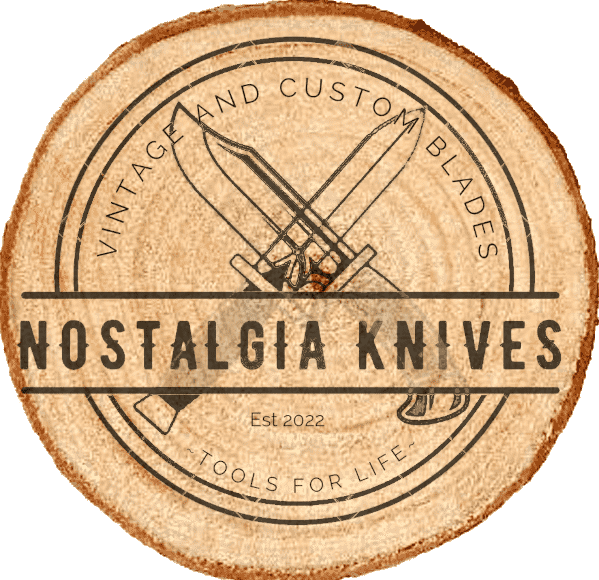Evolution of Blades: A Comprehensive History of Knife Development.
Posted on November 19, 2023 by congo
Evolution of Blades: A Comprehensive History of Knife Development.
Introduction:
The history of knives is a journey that spans millennia, reflecting the ingenuity and resourcefulness of human civilization. From rudimentary stone tools to the precision-engineered blades of today, the evolution of knives is a testament to our constant quest for innovation. This article will trace the fascinating development of blades, exploring the materials, techniques, and cultural influences that have shaped these indispensable tools throughout history.
Early Beginnings:
The earliest evidence of knife usage dates back to the Paleolithic era, where our ancestors crafted simple cutting tools from flint, obsidian, and bone. These primitive knives served essential purposes, from hunting and food preparation to crafting other tools. As humanity progressed into the Neolithic period, the advent of agriculture introduced the need for more specialized knives, leading to innovations in design and materials.
Metallurgy and the Bronze Age:
One of the most significant leaps in knife development occurred with the discovery of metallurgy. The Bronze Age saw the emergence of knives crafted from copper and later bronze, providing a substantial improvement in durability and cutting efficiency. As societies mastered the art of alloying metals, blades became sharper, more durable, and better suited for various tasks.
Iron and Steel Revolution:
The transition from the Bronze Age to the Iron Age marked a pivotal moment in knife history. Iron offered superior strength and versatility, and the refinement of iron-working techniques gave rise to more sophisticated blade designs. Eventually, the advent of steel further revolutionized knife-making, as blade-smiths could now create alloys with optimal combinations of hardness, toughness, and corrosion resistance.
Cultural Influences:
Throughout history, different cultures have left their mark on knife development. The Japanese, for instance, are renowned for their masterful crafting of samurai swords, characterized by precision and a deep understanding of metallurgy. Meanwhile, the Vikings’ seafaring lifestyle influenced the creation of robust and versatile knives for various tasks, including shipbuilding and survival in harsh climates.
The Renaissance and Technological Advances:
The Renaissance period witnessed a resurgence of interest in science and craftsmanship, contributing to advancements in metallurgy and blade design. The era saw the emergence of folding knives, a practical solution for everyday carry. The Industrial Revolution further transformed the knife-making landscape, introducing mass production and innovative manufacturing processes.
Military and Combat Knives:
The demands of warfare have consistently driven innovations in knife design. Military knives evolved from trench knives of World War I to the iconic combat knives of World War II, such as the K-Bar. These blades were designed not only for combat but also for utility, reflecting the multifaceted roles knives play in the military.
Contemporary Knife Making:
In the modern era, knife design has reached new heights with the use of advanced materials such as stainless steel, titanium, and high-tech composites. Custom knife makers and boutique manufacturers push the boundaries of creativity, producing knives that blend functionality with artistic expression. From tactical knives to chef’s knives, the contemporary market offers a diverse array of specialized blades to suit various needs.
Conclusion:
The evolution of blades is a rich tapestry woven with threads of innovation, cultural influence, and technological progress. From the humble origins of stone tools to the cutting-edge blades of today, the history of knives mirrors the resilience and adaptability of humanity. As we continue to push the boundaries of what is possible, the story of knife development remains an integral part of our shared history, reminding us of the essential role these tools have played in shaping the course of human civilization.
Category: History & Legacy
Free Shipping on orders over $79.00
- - USA only
- - USPS Flat Rate
- - Not valid with other promotions
Make An Offer!
- - Button only visible to logged in users.
- - Unreasonable offers will be dismissed.
- - Submitting an offer is not a commitment to purchase.
- - Some items excluded from Make Offer feature.
Category Menu
- Under $108989 products
- Camp/Scout Knives3737 products
- Chef Knives33 products
- Collectible Knives248248 products
- True Nostalgia2323 products
- Damascus Knives3434 products
- Everyday Carry[EDC]326326 products
- Fixed-Blade5454 products
- Folding-Blade339339 products
- Straight-Razor11 product
- Pocket Knives299299 products
- Hunting Knives7979 products
- Money Clip Knives22 products
- Multi-Tool Knives4848 products
- Novelty Knives3636 products
- The Barrel33 products
- By Manufacturer386386 products
- Amica11 product
- Anvil Brand44 products
- AutoPoint22 products
- Bear MGC11 product
- Bear & Son Cutlery11 product
- Böker1212 products
- Böker Solingen66 products
- Boker USA33 products
- Boker Plus22 products
- Browning Knives22 products
- Buck knives22 products
- Buck Creek11 product
- CamCo33 products
- Camillus Cutlery2727 products
- Case XX™2626 products
- Cattaraugus Cutlery Co.33 products
- Cherokee11 product
- Clauss Cutlery11 product
- Colonial Knives1818 products
- Coyote Prov. USA11 product
- Ranger11 product
- Columbia River11 product
- Comanche11 product
- Craftsman55 products
- Crowing Rooster11 product
- Cuda11 product
- Custom/Handmade3232 products
- CutCo11 product
- E.C. Simmons Cutlery Co.11 product
- Elk Ridge11 product
- ESEE11 product
- F.A. Bower Imp. Co.11 product
- Federal Knife Co.33 products
- Johnston USA11 product
- Frost Cutlery1515 products
- White Tail11 product
- Steel Warrior55 products
- Frost Family11 product
- G.C. & CO Mora, Sweden11 product
- Gerber44 products
- Gerson Co. Boston11 product
- Hammer Brand55 products
- Hen & Rooster™1010 products
- HIT USA11 product
- Imperial3333 products
- iPak11 product
- IXL George Wostenholm11 product
- J.B Rand & Co.11 product
- John Primble11 product
- Johnson Western Works11 product
- Ka-Bar22 products
- Keen Kutter11 product
- Kent22 products
- Kentucky Cutlery44 products
- Eagle Edge44 products
- Kissing Crane11 product
- Klein Tools Inc.44 products
- Lark33 products
- Latama11 product
- New York Knife Co.11 product
- Old Forge Knives11 product
- Other Knives22 products
- Owl Head22 products
- PAL Cutlery Co.11 product
- Parker Cutlery Co.11 product
- PIC11 product
- Providence Cutlery66 products
- Puma33 products
- Queen Cutlery Co.11 product
- Remington22 products
- Ridge Runner11 product
- RILL Simple Tools11 product
- Rite Edge11 product
- Robeson Cutlery33 products
- Rough Rider33 products
- Royal Brand Cutlery11 product
- Sabre22 products
- Schrade2424 products
- Old Timer1313 products
- Uncle Henry55 products
- Sears55 products
- Seki22 products
- Sharp33 products
- Sheffield Knives55 products
- Simonds11 product
- SOG22 products
- Solingen Knives11 product
- Syracuse USA11 product
- Clover Brand11 product
- The Ideal1414 products
- Thornton USA11 product
- Ulster77 products
- Unknown/Misc.4242 products
- Utica Cutlery Company99 products
- Kutmaster99 products
- Valley Forge - Newark, NJ11 product
- Victorinox1010 products
- Wenger33 products
- Western22 products
- Winchester11 product
- Zippo55 products
EXCELLENT rating
Based on 1 reviews

By using this site you're accepting
our Online Sales Disclaimer
*Must Be 18 years or older to purchase*
Buyers Are Responsible For Knowledge Of And Adherence To Their Country, State and Local Knife Laws.
CA PROP 65 ⚠WARNING: Cancer and Reproductive Harm - www.P65Warnings.ca.gov
Copyright © 2025 · All Rights Reserved · NostalgiaKnives.com
Theme: Natural Lite by Organic Themes
